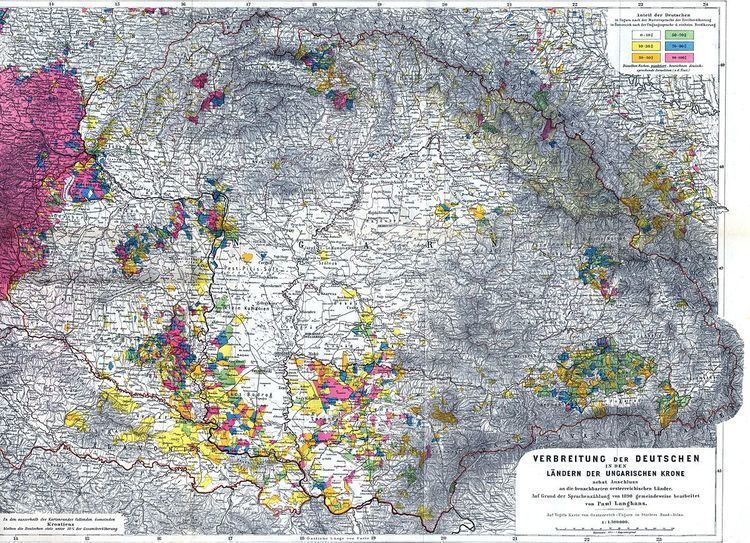 | ||
In Croatia, there are still over 2,900 people who consider themselves German, most of these Danube Swabians. Germans are officially recognized as an autochthonous national minority, and as such, they elect a special representative to the Croatian Parliament, shared with members of eleven other national minorities. They are mainly concentrated in the area around Osijek (German: Esseg) in eastern Slavonia.
Contents
History
With the dissolution of the Austro-Hungarian Empire and the establishment of the Kingdom of Serbs, Croats and Slovenes, the Germans of Croatia became a minority. In 1920, Germans established the cultural association Kulturbund. Kulturbund was banned on April 11, 1924 by Minister of the Interior Svetozar Pribićević. The following government of Ljuba Davidović and the Democratic Party saw the ban lifted.
In 1922, they formed the German Party (Partei der Deutschen). The party existed until it was banned as part of King Alexander's dictatorship in 1929.
The Croatian German population reached a peak number of 85,781 in the 1900 census, while this number plummeted after the German exodus in the aftermath of World War II. After the war, 100,000 Yugoslav Germans fled to Austria. This population was not dealt with in the Potsdam Agreement which prevented them from being repatriated to Germany. The Allies considered them Yugoslavian citizens and sought their repatriation there. However, on June 4 the communist Yugoslav regime released a decree that rescinded the citizenship of Yugoslavian Germans. Their property was henceforth confiscated, and the majority settled in Germany and Austria. Some managed to sneak back into Yugoslavia and returned to their homes.
The historically predominantly German town of Čeminac built the parish Church of Sacred Heart of Christ in 1906-1907. The German population in the town was forced to leave in 1945. After democratic changes in Croatia in 1990, former inhabitants of the town, mostly living in Germany, repaired the church. However, on April 10, 1992 the church was burnt by Serb forces as part of the Croatian War of Independence. In 2001, various levels of the Croatian government contributed to its repairs, which were carried out by 2005.
In 1996, Croatia and Germany signed an agreement to facilitate the marking of German graves from the World Wars in Croatia. There are German military cemeteries in Pula, Split and Zagreb. In 2005, the Croatian government passed a comprehensive law on the return of nationalized Austrian property to its rightful owners.
Demographics
According to the 2001 Croatian census, there are 2,902 Germans in Croatia.
Geography
The main locations in Slavonia formerly settled by Germans include:
There were many German settlements in the adjacent region of Syrmia (Symrien); there is still a village called Nijemci which literally translates to "Germans". The main locations in the Croatian part of Syrmia formerly settled by Germans include:
German settlements in Western Slavonia:
Culture
The Germans and Austrians have created the Society of Germans and Austrians of Croatia. There is a German culture centre in Osijek, and a small number of German schools in the area.
Since the fall of communism and Croatian independence, the minority has held an annual academic conference titled Germans and Austrians in the Croatian cultural circle.
